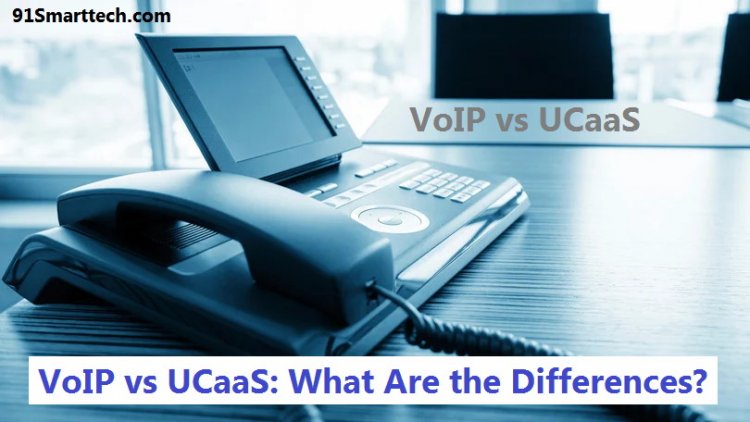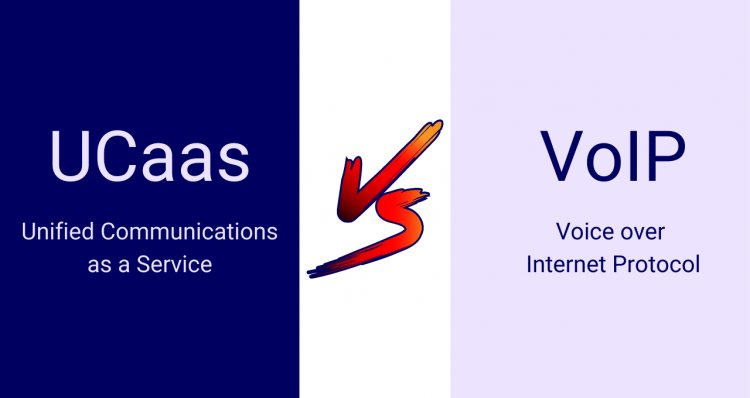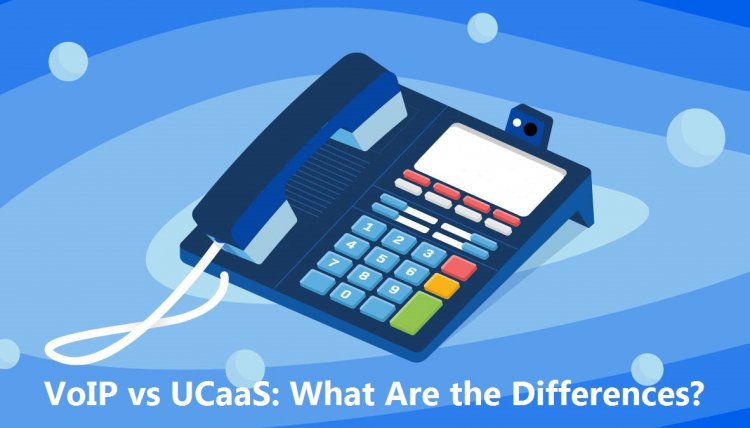VoIP vs UCaaS: What Are the Differences?
To help you understand what's what, we delve deep into VoIP and Unified Communications as a Service (UCaaS).

Most business technology buyers should be familiar with Voice-over-IP (VoIP) by now. Because of its low cost in comparison to on-premises PBX systems, it has become the modern standard for basic business voice calling. VoIP delivered as a cloud service has recently driven down costs even further.
However, VoIP has additional benefits. Because it is software-based, it can integrate with other software systems to power more than just voice communications. Because of this capability, a new category of VoIP-based business communications software known as Unified Communications-as-a-Service has emerged (UCaaS).
The goal of UCaaS is to elevate business communications beyond what we expect from traditional phone technology, not just add new features to voice calling. UCaaS systems aim to integrate voice with the software on which your company relies the most, resulting in multi-channel delivery systems that boost productivity. And, while that may sound complicated and potentially difficult to manage, it doesn't have to be if you focus on your organization's actual needs and don't get bogged down by the extensive menus of options that vendors may have on offer.
Also Read: VoIP Services For Small Business: 10 Best Business VoIP...
UCaaS seeks to take all business communications and route them over internet protocol, whereas VoIP is typically just a voice service provider that handles inbound and outbound voice calls (IP). It is multi-modal, with text messaging, chats, video conferencing, screen sharing, video meetings, and other features. However, it begins with VoIP to power the voice component.

The overall market for UCaaS is growing, as evidenced by the data in the chart below from market research firm Statista(Opens in a new window). Within the next couple of years, the majority of customers are expected to choose a hosted/managed solution.
In this in-depth look, we'll look at the features you can expect from your average VoIP provider, as well as the winners of our most recent PCMag Business Choice Awards for VoIP survey. Then, we'll look at how UCaaS providers build on and extend basic VoIP features to provide more robust communications platforms for your business.
What VoIP Gives You
VoIP, at its core, is a digital telephone service that transports and delivers communications over the internet. You can make and receive calls over your internet connection using handsets, as you would in most traditional office settings, or softphone applications on PCs or devices if you prefer.
Many of the same features are available through VoIP as they are through a traditional telco service provider. You can listen to and receive voicemail messages, monitor calls using caller ID, and forward calls to alternate lines if the receiver is unavailable. Auto-attendants, call holds, call logs, call monitoring, call recording, call transcriptions, dial-in conferencing, and number porting are some other features that may not be available with basic telco phone plans.
Also Read: Best Gaming Laptop under 50000 (2023)
Networking Considerations
One disadvantage of VoIP, even for cloud-based services, is that it can be taxing on your local area network. When you enable VoIP, your network will be inundated with voice traffic from PCs and VoIP-enabled desktop phones, not to mention smartphones, tablets, and other devices. Not only is the volume of traffic an issue; the most serious concern is that VoIP traffic necessitates special consideration.

Normal data traffic can withstand brief network slowdowns as well as the occurrence of packet loss, latency, and network jitter. VoIP traffic dislikes all of these things and tends to react negatively to them. You may hear audible gaps in your conversations or even drop calls.
All of the best VoIP providers can provide you with customer service engineers. However, you will still require on-staff IT professionals, and managing VoIP traffic will consume a significant amount of their time, particularly during the initial roll-out of the service.
Remember that if this is true when simple voice communications are converted into data streams, the challenges only increase as more channels are added, which is exactly what happens when UCaaS is deployed.
Also Read: Best Gaming Phones 2023: Best Gaming Phone in The World
Stepping Up to UCaaS
UCaaS begins with voice, but as the name implies, it adds value by also providing other channels. This includes, most notably, video, with the ability to schedule one-on-one video calls as well as one-to-many video conferences.
These capabilities may not have seemed necessary for smaller businesses at one time, but in the age of the Covid-19 pandemic and hybrid remote workforces, they have become essential. With video conferencing and VoIP, you can hold meetings with hundreds of people, share your screen with everyone in the room, and even send and receive files to everyone on the call or to individual attendees.

UCaaS tools also allow you to chat and text with coworkers, which has become a must-have feature for remote workforces. If you're on a video call with a client and your sales representative is speaking out of turn, you can send them a private chat message to get everyone on the same page. This also allows your team members to discuss more time-sensitive and casual interactions via chat messages rather than emails.
Some UCaaS providers enable group project management and deep collaboration. Document sharing and simultaneous editing, to-do lists, shared calendars, and even joint file storage are all examples.
If you're still the type of Neanderthal who needs to send and receive faxes, some UCaaS solutions allow you to do so from your computer or mobile device. Faxes are typically saved automatically in your Dropbox or Microsoft OneDrive account. Managing faxes digitally also provides you with greater control over who is sending and receiving faxes, as well as what they are faxing. Most systems also include tools to help you block spam faxes.
Also Read: Best Wireless Chargers 2023: Best Wireless Chargers for...
The UCaaS Advantage: Integration
However, perhaps the most important feature of a UCaaS platform is its ability to integrate with third-party solutions and help import and export data from tool to tool. For example, if your UCaaS tool integrates with your Salesforce account, you can view customer interaction histories, launch calls directly from your Salesforce dashboard, and add notes about what is said during the call. Similarly, a Microsoft Outlook integration can parse incoming emails for phone numbers and allow you to initiate calls from within the application.
Integrations are particularly beneficial for businesses that intend to use their UCaaS tool to respond to help desk tickets. The ability to make and receive calls directly from the help desk console is extremely useful. Consider allowing help desk agents to research customer interactions or add notes to customer records while on the phone, and then tying this data back across your UCaaS, help desk, and customer relationship management (CRM) tools for later edification.

This is because, rather than cherry-picking communications tools from multiple vendors, most vendors offer bulk discounts when you bundle all of your UCaaS tools together. Consider how you get your home's cable, internet, and phone service: buying all three at once is usually less expensive than going with a different vendor for each.
Also Read: Best VoIP Services: VoIP Business Phone Provider
Bundling also ensures that each service seamlessly integrates and reports back to the others. If you use different vendors for VoIP, video, and chat, there's no guarantee that they'll work well together.

 Mike2051
Mike2051 








